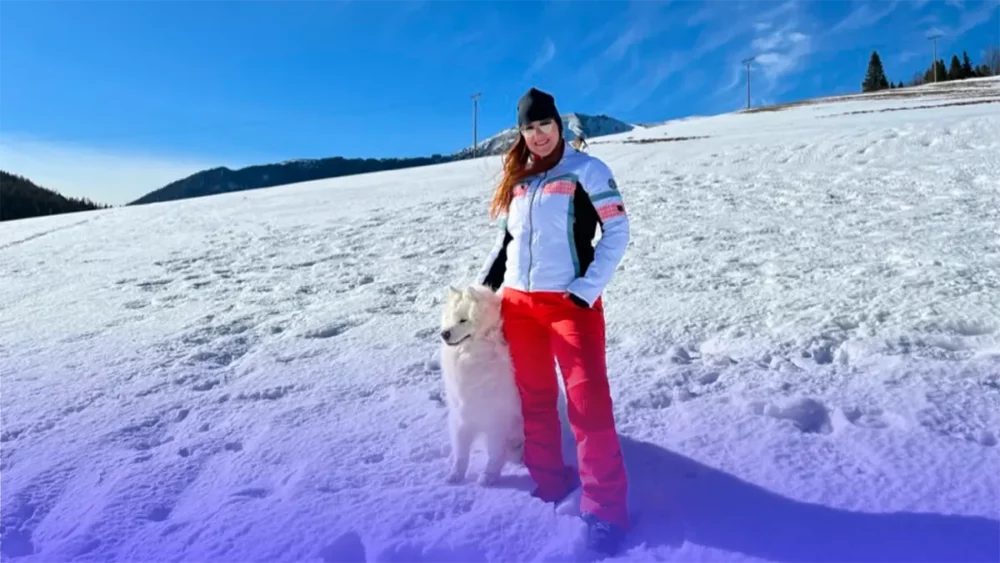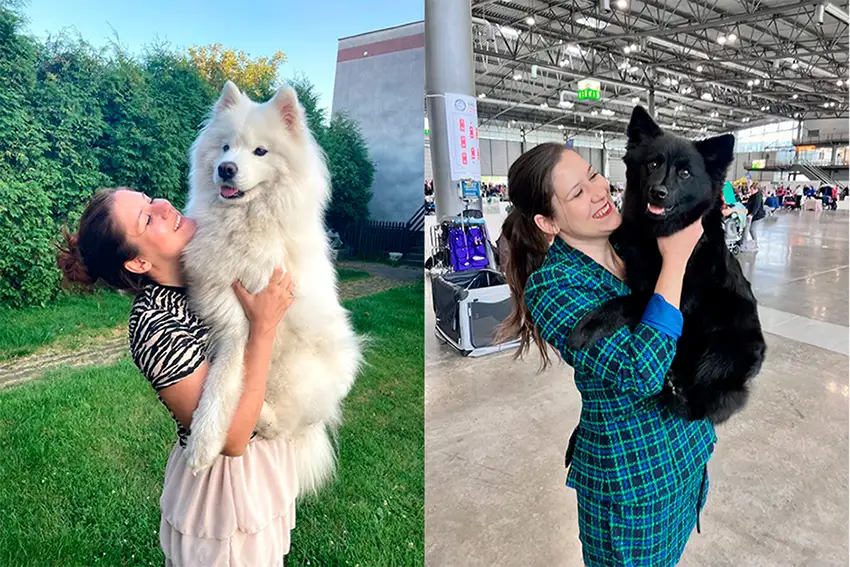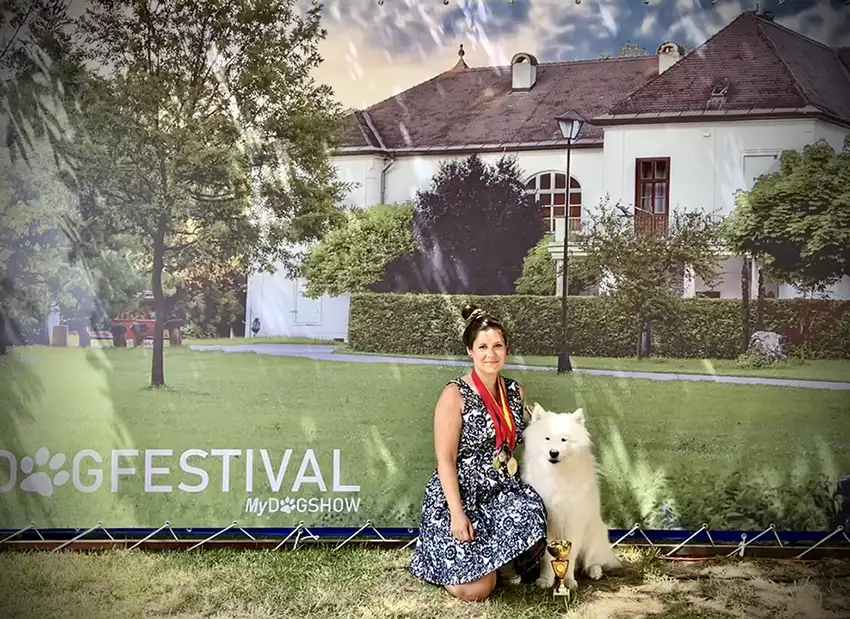Interview with Martička Vrajíková: From HR Administration to the World of Test Scenarios, Bugs, and Backlogs

Martička proves that when curiosity pulls you in a new direction and IT smells better than diplomacy, a career switch can bring both joy and a sense of professional “flow.” Add four dogs, a wedding, dog trekking, and one unforgettable rescue mission — and you’ve got a story worth telling.
When someone mentions Quality Assurance, words like “fascinating” or “joyful discovery” don’t usually come to mind. But for Martička, they do. She stumbled into testing from HR quite by chance — and soon HR became her professional past.
In this interview, she talks openly about what she enjoys in male-dominated teams, why she prefers the chaos of testing over HR routine, and what it’s like to live with four dogs who practically have their own calendar.
Martička, your path to QA was quite unconventional — from HR administration straight into IT. What drew you to that change, and how did it shape you?
Honestly, it was curiosity and coincidence. In HR, I was writing contracts, tracking attendance, and handling payroll support. When we were hiring for a QA position, I asked one of the testers to just “explain it to me.” He saw potential in me, started mentoring me after hours, and I got completely hooked.
When leadership changed in HR, I made the jump into IT. That’s when I fully realized I was an introvert — a bit antisocial, even — and that the technical world suited me better than endless employee questions.
What discouraged you most about working in HR?
The repetitive employee questions and the constant need to be patient and diplomatic. I’m a bit of a hothead, so it drained me quickly. Plus, I missed technical problem-solving — I always enjoyed tinkering with the HR system more than dealing with people.
What was it like to sit in the office after hours and teach yourself a completely new profession? Was it more curiosity or fear?
A mix of both. Long evenings, lots of patience, and zero formal “retraining.” I learned mostly through practice. I couldn’t have done it alone — I’m not self-taught. There was fear of the unknown, but curiosity won.
How did people react when you moved from HR to IT?
The IT leadership was skeptical at first. They didn’t think I’d last. But I proved them wrong and ended up staying for several years. It was a visible transformation, too — trading heels and dresses for sweaters and slippers. And suddenly, I became more productive.
You mentioned you love the moment when initial fear of a new feature turns into joy that it works. Is there a project you’re especially proud of?
I’m proud of how big things — like AI or 360° feedback — evolve from intimidating concepts into logical, functional parts of a product. And then hearing feedback from clients saying, “That’s exactly what we wanted.” That’s the best feeling.
How do you deal with the constant uncertainty — that there might always be one more hidden bug somewhere?
That’s part of the craft. Absolute certainty doesn’t exist. What helps me is grounding habits — notes, systematic reporting, continuous checks, and accepting the fact that in QA, risk is simply part of the process.
You strike me as someone who likes order and control, yet testing can be chaotic. How do you balance that in your daily work?
In my personal life, I live by plan and order. But in testing, I’m more of a spontaneous explorer. At the end of the delivery, I still take charge — I make sure processes are in place — but I also leave room for “wandering through the product,” where bugs tend to hide.
Have you ever experienced a true crisis moment at work?
Definitely. When testing hits the stage where there’s nothing left to test, and you’re just waiting for fixes. It’s frustrating because you lose the sense of control. In those moments, I try to stay organized and manage my notes, but that helpless feeling is real.
What’s your personal “QA lifehack”? Anything that helps you stay focused and efficient while testing?
Headphones and white noise (music or podcasts that aren’t too engaging), my own system of notes, alternating between deep silence and rhythm, and a home setup where I can sink into my “focus bubble.”
What gives you the most meaning in your work at Sloneek? Do you feel your testing directly impacts how people use the HR app?
Absolutely. My favorite moment is right before release, when everything clicks into place — and then seeing it actually help clients. I don’t see QA as “error hunting” but as a service dedicated to maintaining and improving quality.
You’ve said you like working in all-male teams. What do you appreciate most about that?
Calmness, direct communication, and less small talk. I can just be myself in IT teams.
How do you combine your introverted nature with working in a team?
It takes me a while to warm up. At team buildings, the first two days are hard — I can’t focus or relax — but then I settle in. That’s why I prefer the home office, where I can create my own working environment.

Let’s take a break from bugs and testing scenarios. You don’t just live in the tech world — you’re surrounded by a pack of four dogs, and that definitely caught our attention. Tell us about your furry crew. How do you manage four dogs and a full-time job?
I run a small kennel and have four dogs: Samoyeds Arinka (3) and Queenie (8), a Swedish Lapphund puppy named Lili (9 months), and Isaac, a 5-year-old Border Collie who belongs to my husband. Dog shows, the Samoyed club, dog trekking — it’s become our lifestyle. Coordinating dog care is a puzzle (thanks to my parents and a friend who also owns a Samoyed), but it works.
Lili is the first Swedish Lapphund in the Czech Republic — quite a rarity. What drew you to that breed?
Love at first sight. She looks like a “black Samoyed,” with gorgeous fur and a personality that fits me perfectly. She’s the first of her breed in the Czech Republic. Getting her wasn’t easy or cheap, but it was worth it.
How do your dogs get along with each other?
Samoyeds tend to bond either closely with humans or with one another. In my case, it’s great that I have several of them — it keeps them from getting lonely when I’m working. And with my husband’s Border Collie, they make a balanced pack.
What’s your take on dogs living in an apartment vs. a house with a yard?
Dogs adapt to the conditions you set. I had a Samoyed in a 250-square-foot studio, and she was fine. She got used to the subway, trams, and traveling. It’s not about space — it’s about how you train and socialize them from the start.
Dog trekking and dog shows sound like a completely different world from IT. What do they give you?
They help me reset my mind. There’s joy in it, but also strategy — choosing which shows to attend, which judges to go for, analyzing the competition. Even there, my analytical brain switches on.

Four furry friends don’t exactly leave much free time. When you do find a weekend off, how do you like to relax?
Peace and quiet in the garden with my dogs, hiking nearby trails. If I do travel, it’s usually for a dog show — for example, to Birmingham or Bologna for the World Dog Show 2026 — and I mix it with a short vacation. I never fly with dogs; I prefer road trips.
And when you need a break from traveling? Are you more of a couch-and-Netflix type or someone who heads outdoors?
Couch and Netflix all the way — Suits, Wednesday, documentaries. I also love going to the sauna. That’s my ultimate mental reset.
What does your ideal weekend without dogs look like?
Occasionally, I need to rest — a few days at a wellness resort, nothing pressing me for time. My mind clears, and the biggest decision is which sauna to choose. That’s the perfect recharge.
Finally, what’s one “fun fact” your colleagues would never guess about you?
I once pulled a drowning man out of the water. I saw him ice swimming, and suddenly he went under. I jumped in, got him out, and rescuers took over. Ever since, I have a deep respect for water — I don’t swim the way I used to.
Martička shows that even an unexpected turn can lead to deep professional fulfillment. Her journey demonstrates how testing can combine system, intuition, and joy in doing meaningful work. Thanks for sharing a story that inspires anyone who might think career change isn’t possible — because when there’s heart in it, anything is.




